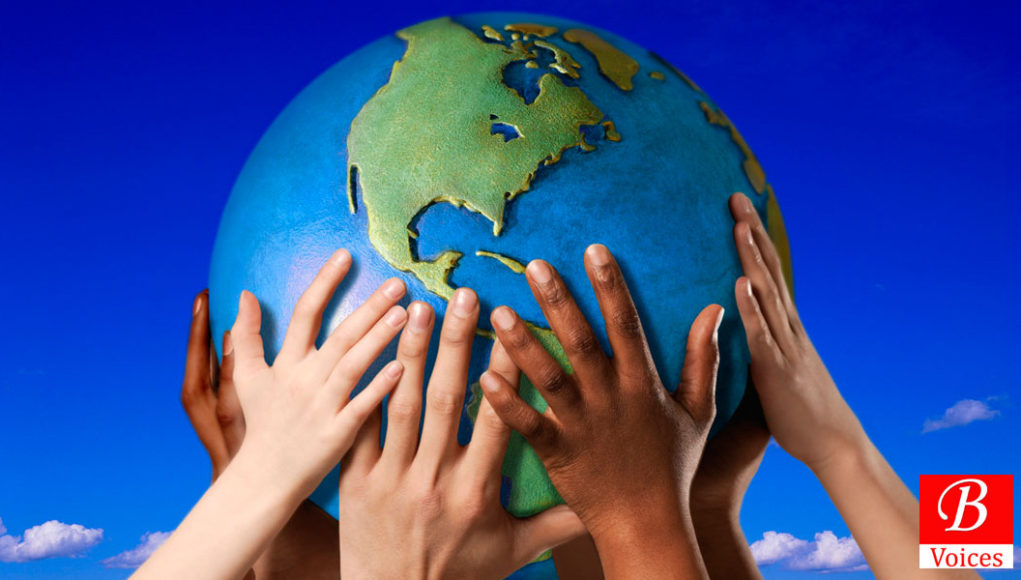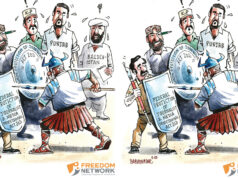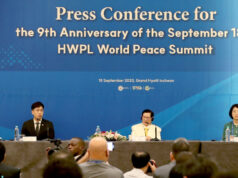Authors: Adnan Aamir, Abdul Salam, Zeeshan Qasim, Raham Yousafzai, Amina Amir, Azaz Syed, Mariyam Suleman, Raza Dotani, Basit Ali, Aasia Niazi and Amna Waheed
Supervised by: Eva Constantaras
Pakistan is a developing country facing wide range of social and economic woes. With a total economic production of $271 billion and a population of almost 200 million the economy of Pakistan is not healthy in anyway. The average income of people in the country is $1142 and almost 4 out of 10 people in the country live below the poverty line. Therefore the economy of this country relies on foreign aid for its economic development, social development and other activities related to civil life. According to the database of Organization for Economic Cooperation and Development (OECD), Pakistan has received foreign aid of $22.85 Billion from all donors in all sectors in last 5 years.
In that context, this report will analyze the foreign aid received by Pakistan in last five years from 2010-15 and make conclusions on which sector has received more aid and the effectiveness of that aid. This report will address different myths about the aid received by Pakistan and also that who are the biggest donors.
1) G7 Countries: The Prime Contributors to Higher Education Sector
Seven leading economic powers of the world, G7 countries, provide 60% of all foreign aid received by higher education sector in Pakistan. They contributed $339 million to higher education sector in Pakistan in last 5 years.
These amounts were used to finance development in universities and sponsoring scholarships, academic seminars and so on. G7 countries include United States, United Kingdom, Germany, Japan, Italy, France and Canada. They paid one third of their total aid on education to higher education sector in Pakistan. That’s higher than what the same countries have provided to the other south Asian countries. They have provided one fifth of their total aid on education to higher education in other South Asian neighboring countries of Pakistan. This shows that the G7 donors of Pakistan are taking aid in higher education seriously.
Read also: Just two Pakistani universities among top global universities due to lesser spending on higher Education
2) Pre-Kindergarten Aid Declined Alarming in Pakistan
Pakistan‘s top ten donor countries have gradually stopped aid money for the early childhood education (Pre-kindergarten level) despite of continuous increase in overall education assistance over the years. Early childhood education is doubtlessly an important and fundamental stage of learning especially for the countries like Pakistan where kids enroll very late in the schools and where most of private and public schools don’t have pre-kindergarten facilities.
With noticeable assistance in 2010, QWIDS data for Pakistan reveals that the early childhood education funding almost reached zero in 2012 and since then there hasn’t been any significant improvement. Whereas, according to the National Center for Education Statistics (NCES), enrollment in prekindergarten-level education has globally risen from 96,000 to over 1 million in the last 30 years.
3) Basic Education: Getting Aid but Not Enough
Primary education is the major challenge for education in Pakistan but it only received one third of total education aid. Pakistan received huge amount of aid totaling $1.787 billion dollars from the top ten donors in education sector but basic education still didn’t get enough attention from the donors considering how many children are out of school.
Basic education got one third of the total donations received for education. Total aid received for basic education from top ten donors stand at 567 million.
Foreign aid provided by donors countries for basic education increased, according to six years data, but still it’s too small given the lack of basic facilities in government primary schools.
The country needs more aid and attention as still only 3 out 4 children finish primary school.
4) Foreign Aid for Food Increases, Yet Half of The Children are Still Stunted
In Pakistan, nearly half of children are too short for their age, which means that almost every second child is stunted. With nine out of 20 children stunted, three out of 20 children wasted (underweight and short) and six out of 20 children underweight Pakistan faces a future adult population with cognitive disabilities and limited economic prospects.
These figures were released by Government of Pakistan in the National Nutrition Survey 2011 (PDF). In the survey, the government of Pakistan said that stunting and malnutrition are directly related with the education and employment status of mothers. Poverty breeds malnutrition and stunting.
To feed 50 million Pakistanis, who are living the below poverty level, foreign countries are providing almost 114 million dollars for basic nutrition, food aid and emergency food response, mean these people are getting 2.3 dollars per year. Over the years foreign aid in these sectors has increased .Data shows that foreign countries have given additional aid from year 2009 to 2011, during Swat operation against militancy coupled with flood Pakistan for IDPs .Pakistan Need to do more to reduce the number of stunting children.
Read also: Balochistan Voices Becomes First Media Organization in Balochistan to Publish a Data Story
5) Foreign Aid for Healthcare Drops While Crisis Continue
Foreign aid for healthcare in Pakistan has been cut by a fifth in 2015. Over the years Pakistan has relied increasingly on foreign aid specifically from 21 countries of the world, for the improvement of healthcare services. In 2012, foreign aids for health care doubled but then rapidly decreased in 2014 onwards. Most countries from the top ten donors, specifically the leading nations for assistance; United Arab Emirates, Japan and Germany, have decreased funding for health care over the last few years.
Pakistan only spends one rupee out of 100 rupees in Gross Domestic Product for healthcare which has resulted in a sick population. When 66 per 1,000 newborns die and 170 per 100,000 mother die during childbirth and millions of people don’t have access to healthcare facilities, the sudden decrease in foreign aid for health care can deepen healthcare challenges.
6) Family Planning: Failure Despite Receiving Highest Aid
Pakistan received more aid for family planning than any other country in the region over the last five years. Pakistan received $200 Million during last five years from the donors’ countries all over the world, while other countries in the region such as Nepal received ($68 Million), India ($122 Million) and Afghanistan ($135 Million).Sri Lanka has received no Aid in this category.
According to the report of Pakistan Economic Survey, Pakistan ranks second in poor family planning in the region after Afghanistan. The data reveals that Fertility rate of Pakistan is 3 which mean on average, 4 children are born to every woman in Pakistan. In region, total number of children that would be born to each woman is 3.
Contraceptives are used by only 38% of Pakistani women, which means 4 women out of 10 are using contraceptive. Whereas, in the region, 5 women out of 10 are using contraceptive. In Pakistan, Annual Growth rate is 4 which mean 4 numbers of people are increased in Pakistan after a year. Regionally, 3 people are increased every year out of 200 people.
7) Infectious Diseases Remains Funders Prime Concern Rather Than High Alert Disease HIV
A breakdown of disease funds shows that four times more funding was dedicated infectious disease prevention as to controls of Sexually transmitted diseases despite the rising menace of HIV, whose spread is fueled by ignorance.
Over the last ten years Pakistan has received 6 million Dollars in the name of foreign aid to cure for disease prevention and control. Infectious disease control funding includes immunization, prevention and control of malaria, TB, diarrhea and other similar bacterial diseases. Prevention and control of Sexually Transmitted Diseases include HIV and AIDS information, awareness raising, education, testing and treatment.
Pakistan is among the minority of countries where more and more people are being infected with HIV, only half of Pakistanis understand the risk. Globally, new infections are going down due to widespread prevention campaigns but in Pakistan during last 2 years there was an almost 11% increase in persons with HIV/AIDS making it the highest rate of increase within the world, according to the US Central Intelligence Agency World Fact book.
NACP reports that Prostitution together with unsafe sex practices are at peak levels. Lack of knowledge and access to correct health information, social restrictions related to sex issues, risky behaviors, economic exploitation, regional and national conflicts and a lack of access to adequate reproductive health services are the major contributing factors for the spread of HIV/AIDS. These factors have hobbled campaigns for both awareness and preventive services.
8) European Donors Dominate Peace building Assistance to Pakistan Over Ten Years
Constantly ranked amongst top five terrorism hit countries on the Global Terrorism Index, Pakistan has received foreign assistance for building peace in parallel. Foreign assistance for promoting peace was twice as high over the last five years (2011-15) compared to the previous five years (2005-10).
DAC countries, DAC EU Member and G-7 countries have been constant providers of peace building support. After 2010, Japan and United States were replaced by United Kingdom and Germany as top donors.
9) US Boosts Funding For Government Reform, Neglects Democratic Participation and Security
Under the democracy strengthening aid umbrella, the United States gave the lowest aid to anti-corruption and human rights in Pakistan and the most to government, civil society and democracy over the last five years (2010-15).
The United States dedicated less than one percent of its democracy budget to anti-corruption and human rights combined. Media and free flow of information, conflict peace and security, government and civil society and democratic participation received the bulk of funding, topping 700 million US dollars over the last five years. The US government, during the same period, directed 70% of the democracy budget to reforming the Pakistani government.
About six percent each went to democratic participation and Conflict, Peace and Security sector, although Pakistan remained a frontline ally of United States and faced severe security challenges and citizens who feel marginalized in the current political system. Media and free flow of information received nearly four percent of the democracy budget over five years.
10) The Continuous Decline of Humanitarian Aid for Pakistan
Humanitarian aid to Pakistan has decreased over the years. Conflict and natural disasters are part of the consequences of global warming globally, with Pakistan especially hard-hit. This chart shows the different donors who donated a total of $6638 million in humanitarian assistance from 2011 to 2015. During the last five years, the humanitarian development aid has gradually declined to 6% of total aid received from a high of 32% in 2011. Also these trends have profound implications for humanitarian action. First, while huge numbers of people in Pakistan continue to rise in poverty, those who remain are increasingly in fragile districts, exposed to war and crisis.
11) Donors Have Cut Foreign Aid to Pakistan and Boosted to India
Pakistan received overall 6% more foreign aid from the international donor countries than India during the last five years. However, the donors have cut 29% of foreign aid to Pakistan and raised 9% to India.
In 2010, Pakistan received 56% and India 44% foreign aid, while in 2015 Pakistan was provided with 45% and India with 55% foreign aid from the international donors.
The international donors cut 12% of foreign aid for both countries. Overall Pakistan receives average $21 million annually as foreign aid.
Note: If you have found an error in this article or a factual inaccuracy or just want to give general feedback then feel free to contact us at [email protected]
This Data Journalism Story was originally published here.
Share your comments!








